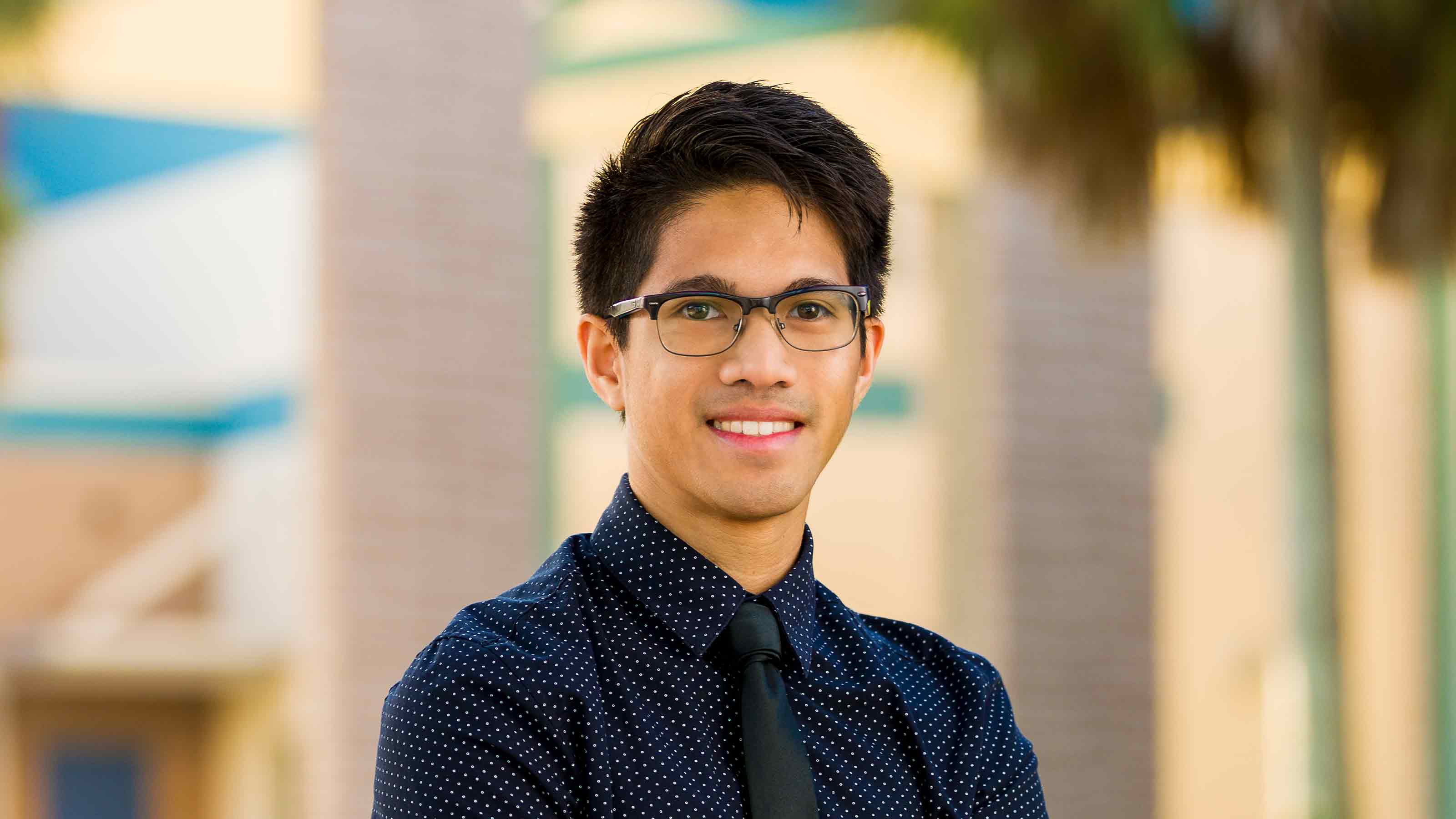Back to School, Ready or Not
This Florida teacher’s school let families choose distance learning or in-person classes.


- Who: Philip Sabado, 29
- Occupation: Social studies teacher
- Where: Ponte Vedra High School in St. John’s County, Fla.
How did you adapt last March when you began to do full-on distance learning? Some teachers recorded lectures and had them posted for students to watch on their own time, but I felt that I needed to do something more interactive. So I would invite everyone to online conferences, where I would walk through my slides, mark them up and then have students ask me questions, either in a chat or on a mike. Two days a week, I did a lecture or tried to do a writing activity—which is really hard to do online.
How did the students respond to this sort of learning? The term that the district uses for what I do is brick-and-mortar schooling. My class typically is, “listen to me lecture, and let’s practice some writing.” The kids who are going to try hard and do very well in a brick-and-mortar school will continue to do well in distance learning. But distance learning made it nearly impossible for me to reach my lower-end students. Some students simply wouldn’t attend certain things or wouldn’t complete the assignments. Even coordinating with the deans, administrators, guidance counselors and parents, there’s only so much I can do.
How can distance learning be effective? If students have devices and a solid internet connection, it gives them the freedom to work at their own pace—more so than with brick-and-mortar schooling. The downside is maintaining motivation and keeping students invested in the process. That was really hard to do.

Sign up for Kiplinger’s Free E-Newsletters
Profit and prosper with the best of expert advice on investing, taxes, retirement, personal finance and more - straight to your e-mail.
Profit and prosper with the best of expert advice - straight to your e-mail.
As a teacher, how has the pandemic affected your life? Seeing my students is really what I miss the most. I miss it every day. I thrived in the classroom setting. All my students know how hard I work for them and how much I care about the learning process. And I didn’t have the type of closure with them that I normally would. There are traditions that I normally do to end the year on a high note, but it ended on a somber, sad note.
Your school delayed classes until August 31. How else will school be different this fall? We have plans for both brick-and-mortar classes and distance learning. Students who have chosen to attend classes will be required to wear face masks if they can’t social distance.
With Florida’s virus cases surging, what do you think about the teachers unions’ objections to returning to class? I understand the desire to go back to a sense of normalcy and to get students back in school. There are arguments for doing that—giving the parents the freedom to work without a babysitter, for instance. That said, we need to value the lives of our students, teachers and parents. We need to try to keep everyone safe. From speaking with other teachers, the overwhelming majority would say to play it safe. As much as we want to go back to brick-and-mortar schooling, it just doesn’t feel safe yet.
Get Kiplinger Today newsletter — free
Profit and prosper with the best of Kiplinger's advice on investing, taxes, retirement, personal finance and much more. Delivered daily. Enter your email in the box and click Sign Me Up.

Emma Patch joined Kiplinger in 2020. She previously interned for Kiplinger's Retirement Report and before that, for a boutique investment firm in New York City. She served as editor-at-large and features editor for Middlebury College's student newspaper, The Campus. She specializes in travel, student debt and a number of other personal finance topics. Born in London, Emma grew up in Connecticut and now lives in Washington, D.C.
-
 6 Stunning Waterfront Homes for Sale Around the US
6 Stunning Waterfront Homes for Sale Around the USFrom private peninsulas to lakes, bayous and beyond, Kiplinger's "Listed" series brings you another selection of dream homes for sale on the waterfront.
By Charlotte Gorbold Published
-
 Six Reasons to Disinherit Someone and How to Do It
Six Reasons to Disinherit Someone and How to Do ItWhether you're navigating a second marriage, dealing with an estranged relative or leaving your assets to charity, there are reasons to disinherit someone. Here's how.
By Donna LeValley Published
-
 Roth IRA Contribution Limits for 2025
Roth IRA Contribution Limits for 2025Roth IRAs Roth IRA contribution limits have gone up. Here's what you need to know.
By Jackie Stewart Last updated
-
 Four Tips for Renting Out Your Home on Airbnb
Four Tips for Renting Out Your Home on Airbnbreal estate Here's what you should know before listing your home on Airbnb.
By Miriam Cross Published
-
 Five Ways to a Cheap Last-Minute Vacation
Five Ways to a Cheap Last-Minute VacationTravel It is possible to pull off a cheap last-minute vacation. Here are some tips to make it happen.
By Vaishali Varu Last updated
-
 How to Figure Out How Much Life Insurance You Need
How to Figure Out How Much Life Insurance You Needinsurance Instead of relying on rules of thumb, you’re better off taking a systematic approach to figuring your life insurance needs.
By Kimberly Lankford Last updated
-
 Amazon Big Deal Days Is Coming! We’ve Got All the Details
Amazon Big Deal Days Is Coming! We’ve Got All the DetailsAmazon Prime To kick off the holiday season with a bang, Amazon Big Deal Days runs Tuesday, October 8 and Wednesday, October 9.
By Bob Niedt Last updated
-
 How to Shop for Life Insurance in 3 Easy Steps
How to Shop for Life Insurance in 3 Easy Stepsinsurance Shopping for life insurance? You may be able to estimate how much you need online, but that's just the start of your search.
By Kaitlin Pitsker Last updated
-
 Five Ways to Shop for a Low Mortgage Rate
Five Ways to Shop for a Low Mortgage RateBecoming a Homeowner Mortgage rates are high this year, but you can still find an affordable loan with these tips.
By Daniel Bortz Last updated
-
 Retirees, It's Not Too Late to Buy Life Insurance
Retirees, It's Not Too Late to Buy Life Insurancelife insurance Improvements in underwriting have made it easier to qualify for life insurance, which can be a useful estate-planning tool.
By David Rodeck Published